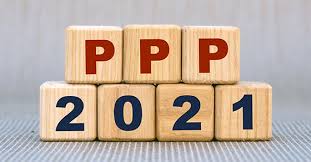News
Changes to Paycheck Protection Program and Second Draw PPP Loan
 At the end of 2020, Congress passed, and President Trump signed, a new law that provides for additional relief related to the coronavirus (COVID-19) pandemic. This law, the Consolidated Appropriations Act, 2021 (CAA, 2021), includes a second draw of Paycheck Protection Program (PPP) loans (PPP Second Draw Loans) and updates to the original PPP loan. It also allows businesses to deduct ordinary and necessary expenses paid from the proceeds of PPP loans.
At the end of 2020, Congress passed, and President Trump signed, a new law that provides for additional relief related to the coronavirus (COVID-19) pandemic. This law, the Consolidated Appropriations Act, 2021 (CAA, 2021), includes a second draw of Paycheck Protection Program (PPP) loans (PPP Second Draw Loans) and updates to the original PPP loan. It also allows businesses to deduct ordinary and necessary expenses paid from the proceeds of PPP loans.
Background. In March 2020, the Coronavirus Aid, Relief and Economic Security (CARES) Act was passed. The CARES Act authorizes the Small Business Administration (SBA) to make loans to qualified businesses under certain circumstances. The provision established the PPP, which provided up to 24 weeks of cash-flow assistance through 100% federally guaranteed loans (Original PPP Loans) to eligible recipients. Taxpayers could apply to have the loans forgiven to the extent their proceeds were used to maintain payroll during the COVID-19 pandemic and to cover certain other expenses.
Additional eligible expenses. In conjunction with the PPP Second Draw Loans, the CAA, 2021 made updates to the original PPP loan rules, which expanded the original eligible expenses made during the covered period. The original expense and the additional eligible expenses are as follows:
- payroll costs
- interest (but not principal) payments on any covered mortgage obligation
- any payment for any covered rent obligation
- covered utility payments
- any covered operations expenditure
- any covered property damage cost
- any covered supplier cost
- any covered worker protection expense
Covered period. The covered period can now be 8-weeks or 24-weeks beginning on the date of the loan and ending on a date selected by the borrower.
Cancellation of indebtedness income. The reduction or cancellation of indebtedness generally results in cancellation of debt (COD) income to the debtor. However, the forgiveness of PPP debt is excluded from gross income. Tax attributes (net operating losses, credits, capital and passive activity loss carryovers, and basis) would not generally be reduced on account of this exclusion.
Deductibility of expenses paid by PPP loans. The CARES Act was silent on whether expenses paid with the proceeds of PPP loans could be deducted. The IRS took the position that these expenses were nondeductible, and the state of California conformed. The CAA, 2021 provides that expenses paid both from the proceeds of loans under original PPP loans and PPP Second Draw Loans are deductible for Federal tax purposes, but the state of California has not announced any changes to its position. Expenses related to PPP loans that are forgiven remain non-deductible as of this writing.
Paycheck Protection Program Second Draw Loans. The CAA, 2021 permits certain smaller businesses that received a PPP loan and experienced a 25% reduction in gross receipts to take a PPP Second Draw Loan of up to $2 million. Updates to the original PPP loan enumerated above also apply to the PPP Second Draw Loan.
Eligible entities. In order to qualify for a PPP Second Draw Loan, a taxpayer must have taken out an Original PPP Loan. In addition, prior PPP borrowers must meet the following conditions to be eligible for the PPP Second Draw Loans:
- Employ no more than 300 employees per physical location;
- Have used, or will use, the full amount of their first PPP loan; and
- Demonstrate at least a 25% reduction in gross receipts in the first, second, or third quarter of 2020 relative to the same 2019 quarter. Applications submitted on or after Jan. 1, 2021 are eligible to utilize the gross receipts from the fourth quarter of 2020.
Eligible entities include for-profit businesses, certain non-profit organizations, housing cooperatives, veterans’ organizations, tribal businesses, self-employed individuals, sole proprietors, independent contractors, and small agricultural co-operatives.
Loan terms. Borrowers may receive a PPP Second Draw Loan of up to 2.5 times the average monthly payroll costs in the one year prior to the loan or in calendar year 2019. However, borrowers in the hospitality or food services industries (NAICS code 72) may receive PPP Second Draw Loans of up to 3.5 times average monthly payroll costs. Only a single PPP Second Draw Loan is permitted to an eligible entity.
Gross receipts and simplified certification of revenue test. Taxpayers who borrow PPP Second Draw Loans of no more than $150,000 may submit a certification, on or before the date the loan forgiveness application is submitted, attesting that the eligible entity meets the applicable revenue (gross receipts) loss requirement.
Loan forgiveness. Like Original PPP loans, PPP Second Draw Loans may be forgiven for payroll costs of up to 60% (with some exceptions) and nonpayroll costs such as such as rent, mortgage interest and utilities of 40%. Forgiveness of the loans is not included in income as cancellation of indebtedness income.
The provisions of CAA, 2021 related to the PPP override any conflicting guidance in the previously issued FAQs. The SBA will shortly revise their FAQs to align with these provisions. The CAA, 2021 is the longest Congressional bill ever passed and the provisions outlined here are only a sampling of those that could affect you and/or your business.
Have questions about these or other provisions in the bill? We can help. Contact us at info@ppandco.com or (408) 287-7911 for assistance. For information and updates, check out our COVID-19 Resources & Updates webpage.